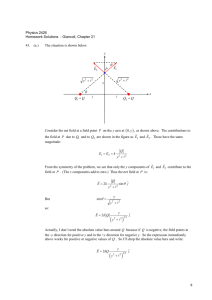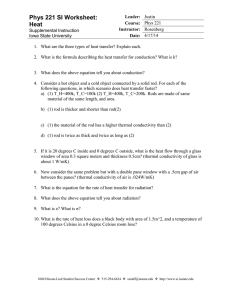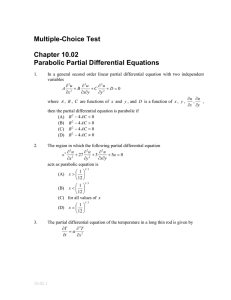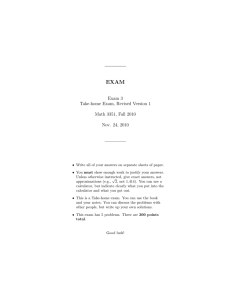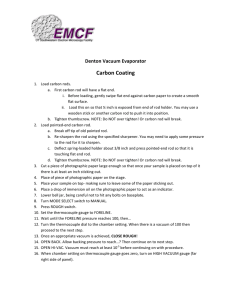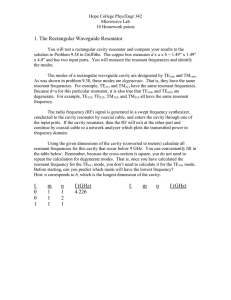Problem 1. Consider the differential equation − 5xy x y
advertisement
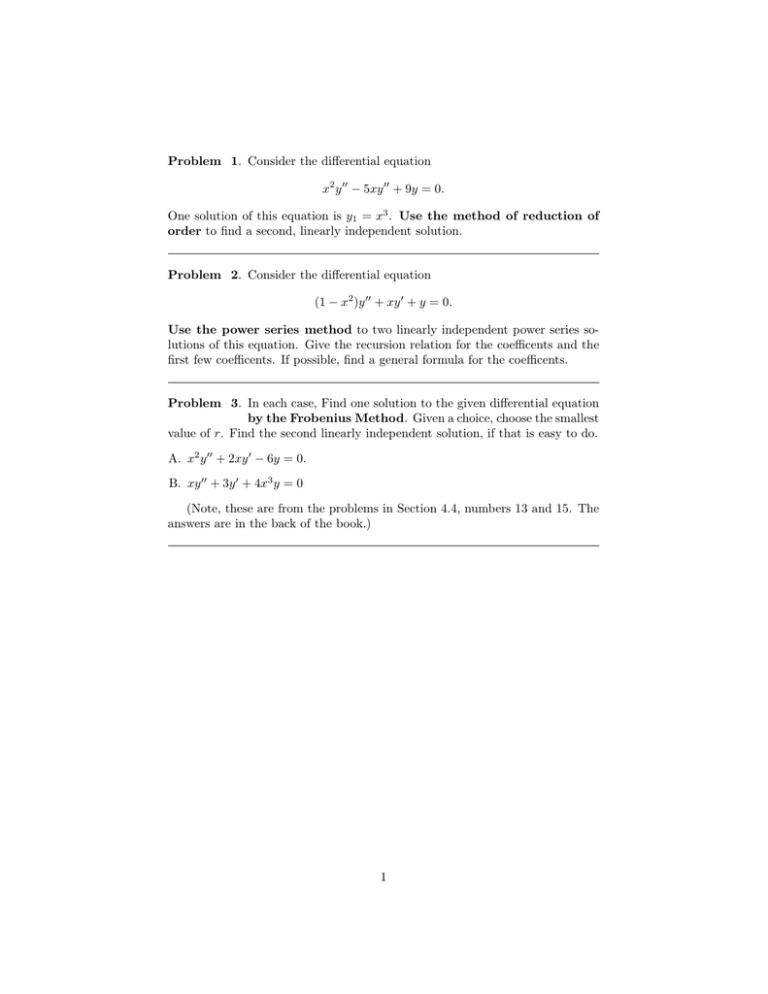
Problem 1. Consider the differential equation x2 y 00 − 5xy 00 + 9y = 0. One solution of this equation is y1 = x3 . Use the method of reduction of order to find a second, linearly independent solution. Problem 2. Consider the differential equation (1 − x2 )y 00 + xy 0 + y = 0. Use the power series method to two linearly independent power series solutions of this equation. Give the recursion relation for the coefficents and the first few coefficents. If possible, find a general formula for the coefficents. Problem 3. In each case, Find one solution to the given differential equation by the Frobenius Method. Given a choice, choose the smallest value of r. Find the second linearly independent solution, if that is easy to do. A. x2 y 00 + 2xy 0 − 6y = 0. B. xy 00 + 3y 0 + 4x3 y = 0 (Note, these are from the problems in Section 4.4, numbers 13 and 15. The answers are in the back of the book.) 1 Problem 4. Consider a rod along the interval [0, L]. The temperature u(x, t) in the rod obeys the heat equation ∂2u ∂u = . ∂t ∂x2 The left end of the rod is held at temperature zero and the right end of the rod is held at temperature 1. In other words, we have the boundary conditions u(0, t) = 0 u(L, t) = 1. We also have an initial condition u(x, 0) = f (x). The problem is to use separation of variables to find the temperature distribution in the rod for all time, giving formulas for the coefficients. Here is a hint: Suppose that u(x, t) is the solution to the problem above and that v(x, t) = u(x, t) − x/L. Show that v(x, t) is a solution of the heat equation with different boundary and initial conditions, and then find v(x, t) and hence u(x, t). 2 EXAM Practice Questions for Final Math 3351, Spring 2003 May 10, 2003 • Write all of your answers on separate sheets of paper. You can keep the exam questions when you leave. You may leave when finished. • You must show enough work to justify your answers. Unless otherwise instructed, give exact answers, not √ approximations (e.g., 2, not 1.414). • This exam has 4 problems. There are 0 points total. Good luck!




